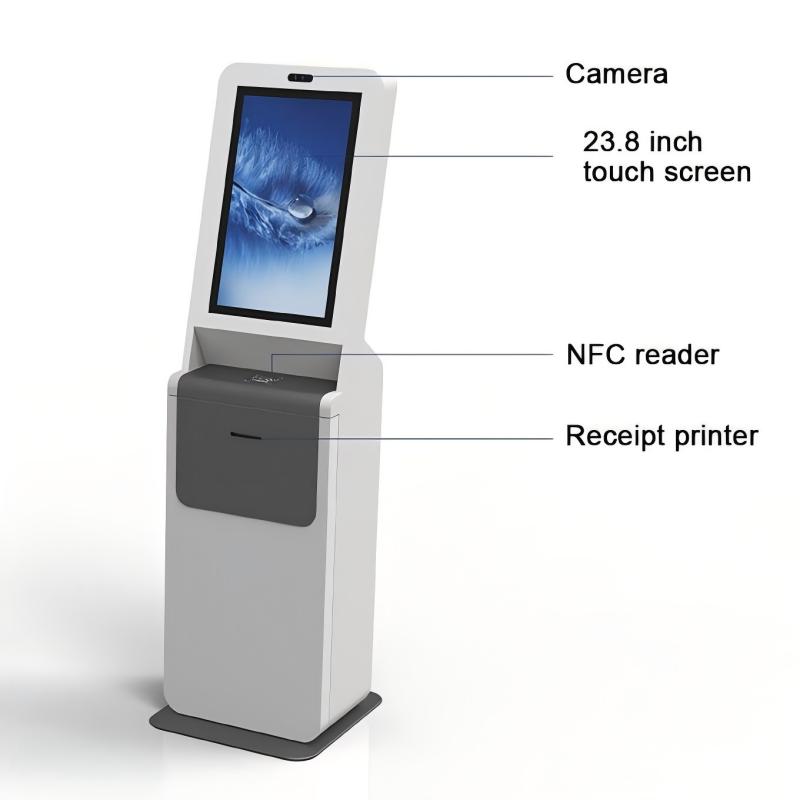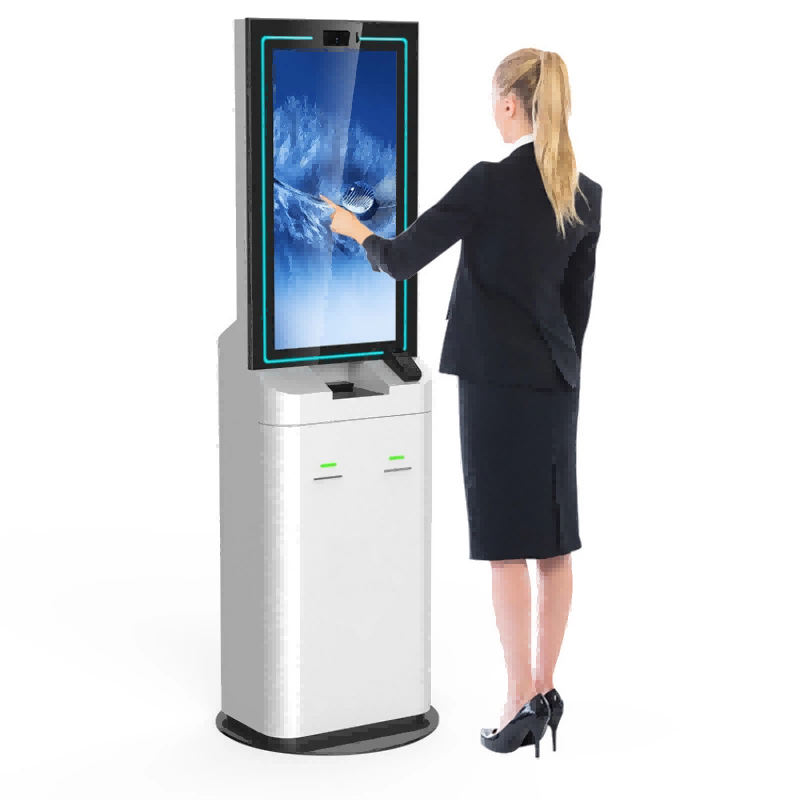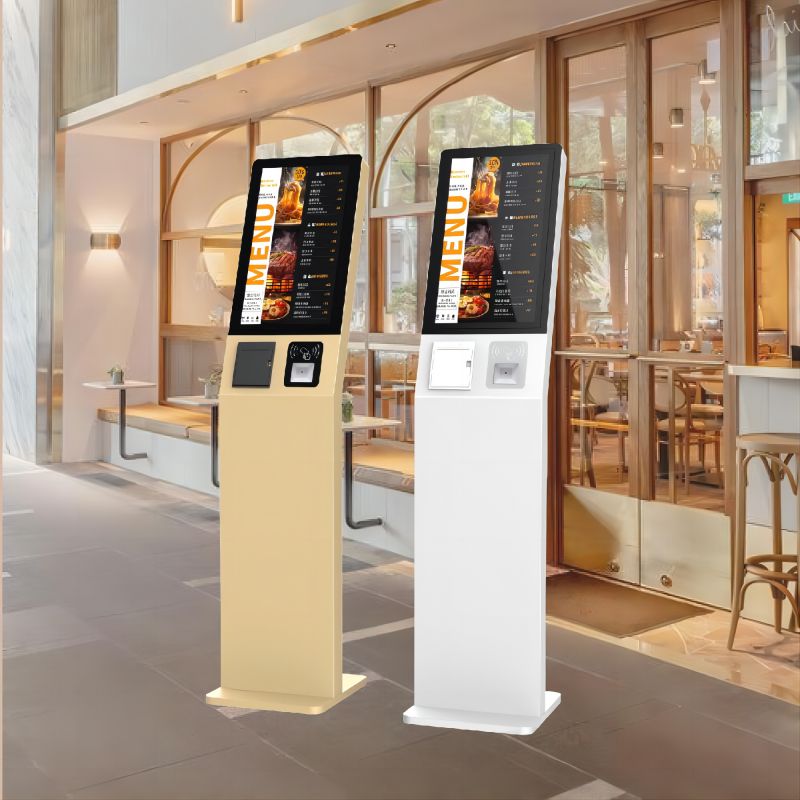
| Component | Description | Manufacturing Process |
|---|---|---|
| Enclosure/Chassis | The outer structure that houses all internal components, designed for durability and ease of use. | 1. Fabricate metal or plastic parts. 2. Assemble and weld parts. 3. Apply surface finishing and painting. |
| Touchscreen Display | Interactive screen for users to navigate the interface, typically 15-22 inches. | 1. Source and test touchscreen displays. 2. Integrate displays into the kiosk enclosure. |
| Payment System | Includes card readers, bill acceptors, and receipt printers for handling transactions. | 1. Assemble and test payment modules. 2. Integrate payment systems into the kiosk. |
| Computer/Processor Unit | Central unit that manages kiosk operations, including CPU, RAM, and storage. | 1. Assemble computer components (CPU, RAM, storage). 2. Install and integrate computer unit into the kiosk system. |
| Barcode Scanner | Device for scanning prescription and product barcodes. | 1. Source and test barcode scanners. 2. Integrate scanners into the kiosk system. |
| Dispensing Mechanism | Automated system for dispensing medication or printing receipts. | 1. Design and assemble mechanical components. 2. Calibrate and integrate dispensing mechanisms. |
| Software | Custom software managing user interactions, transactions, and integration with pharmacy systems. | 1. Develop software. 2. Install and test software on the kiosk system. |
| Cooling and Ventilation System | Maintains optimal operating temperatures for electronic components. | 1. Install cooling systems. 2. Test thermal management efficiency. |
| Connectivity Modules | Includes Wi-Fi, Ethernet, or 4G modules for network connectivity. | 1. Source and install connectivity modules. 2. Configure and test network connectivity. |
| Power Supply Unit | Provides power to all components, ensuring stable and reliable operation. | 1. Assemble power supply units. 2. Integrate and test with internal wiring. |
Self-service pharmacy kiosk combines advanced hardware and software to enhance pharmacy operations. The hardware includes a durable enclosure, a touchscreen display for user interaction, and a payment system with card readers and receipt printers. Essential components also include a barcode scanner for prescription verification, a dispensing mechanism for medication or printouts, and a computer unit that controls all operations. The software provides a user-friendly interface for managing prescriptions, processing transactions, and integrating with pharmacy databases. Together, these elements streamline pharmacy tasks, improve efficiency, and enhance the customer experience.

Self-service pharmacy kiosk offers a range of applications and benefits. They allow customers to independently manage prescription refills, access medication information, make payments, and print receipts, reducing wait times and alleviating the workload on pharmacy staff. These kiosks handle over-the-counter sales and prescription pickups efficiently, enhancing operational efficiency. Benefits include increased customer satisfaction through faster service, reduced staffing needs, and minimized errors. By automating routine tasks, self-service kiosks improve overall pharmacy efficiency, leading to higher profitability and a better customer experience.

Enclosure Design: Tailor the kiosk’s exterior to match your pharmacy's branding, including color schemes, logos, and material finishes.
Touchscreen Size: Choose from various screen sizes to suit the space and user needs, ensuring an optimal interactive experience.
Software Features: Customize the user interface to include specific medication databases, workflow integrations, and language options for better usability.
Payment Options: Integrate different payment systems, such as card readers, mobile payment solutions, or bill acceptors, based on customer preferences.
Dispensing Mechanisms: Select mechanisms for dispensing medications or printing documents according to the types of products and services offered.
Connectivity Modules: Customize network connectivity options, including Wi-Fi, Ethernet, or 4G, to ensure reliable communication with pharmacy systems.

The cost of a self-service pharmacy kiosk typically ranges from $5,000 to $15,000, depending on features and customization. Basic models are more affordable, while advanced configurations with integrated dispensing and payment systems are on the higher end. Ongoing costs include software updates and potential hardware maintenance. The return on investment (ROI) is realized through reduced labor costs, increased operational efficiency, and improved customer service. By automating routine tasks like prescription refills and payments, kiosks minimize wait times, boost customer satisfaction, and ultimately enhance profitability.

| Type | Size (H x W x D) | Design Features | Price Range (USD) |
|---|---|---|---|
| Self-Service Prescription | 6 ft x 2 ft x 2.5 ft | Touchscreen, secure payment terminal, printer | $5,000 - $12,000 |
| Over-the-Counter (OTC) | 5.5 ft x 2 ft x 2 ft | Interactive display, barcode scanner, dispenser | $3,000 - $8,000 |
| Prescription Drop-Off | 6 ft x 2.5 ft x 2.5 ft | Lockable compartments, touchscreen, camera | $4,000 - $10,000 |
| Consultation Kiosk | 6 ft x 3 ft x 2.5 ft | Video conferencing, privacy screen, touchscreen | $7,000 - $15,000 |
| Health Check Kiosk | 6.5 ft x 3 ft x 2.5 ft | Blood pressure monitor, weight scale, touchscreen | $6,000 - $13,000 |
| Mobile Pharmacy Kiosk | 5 ft x 2 ft x 2.5 ft | Portable, touchscreen, secure storage | $4,500 - $9,500 |
Identify Needs: Determine the specific needs of your pharmacy, such as the types of services the kiosk will offer (e.g., prescription pick-up, consultation).
Set a Budget: Establish a budget based on the type of kiosk you need and the features required.
Research Vendors: Look for reputable vendors with a history of producing high-quality pharmacy kiosks. Check reviews, case studies, and customer feedback.
Evaluate Customization Options: Consider how much customization you need in terms of design, branding, and additional functionalities. Choose a vendor that offers flexible options.
Request Demos: Ask for a demo or visit a site where the kiosk is installed to see it in action. This will help you assess the ease of use and the quality of the kiosk.
Check for Compliance: Ensure the kiosk meets relevant health, safety, and accessibility standards and is compliant with local regulations.
Negotiate Terms and Purchase: Once you've selected a vendor, negotiate the terms, including warranty, maintenance, and support services, and proceed with the purchase.
Installation and Training: Coordinate with the vendor for installation. Ensure your staff is trained on how to use and maintain the kiosk properly.
What did our happy clients say?
We recently installed the pharmacy kiosk from Lean Kiosk System, and it has completely transformed our workflow. Patients love the convenience, and we appreciate the reliable performance. Highly recommend Lean Kiosk System for any pharmacy!
Lean Kiosk System delivered a top-quality product with our new pharmacy kiosk. The installation was seamless, and it's incredibly user-friendly. We're very satisfied and would recommend them to anyone looking to upgrade their pharmacy services.
Our pharmacy's efficiency has significantly improved thanks to the kiosk from Lean Kiosk System. The design is sleek, and the technology is robust. We're very happy with our purchase and recommend Lean Kiosk System to all!
The pharmacy kiosk from Lean Kiosk System exceeded our expectations. It's intuitive for both staff and customers, and the customer service has been outstanding. We highly recommend Lean Kiosk System for their excellent product and support.